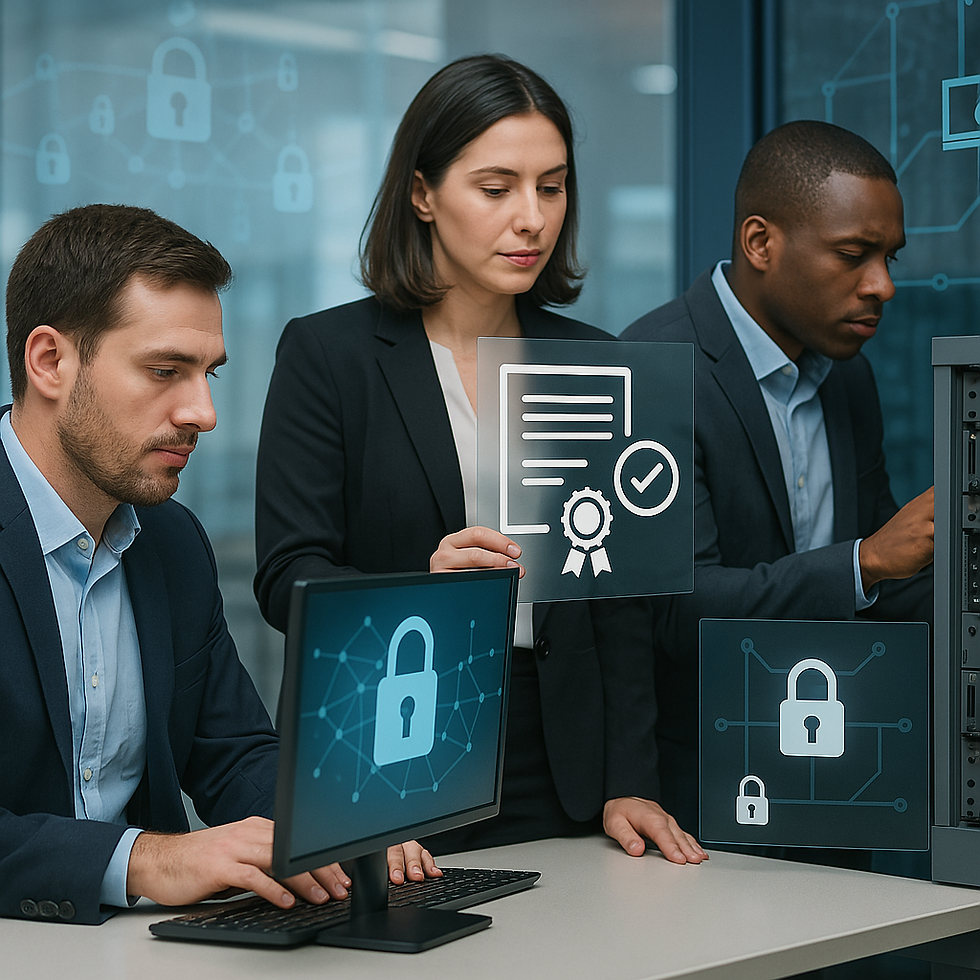How to Secure Your Remote Workforce
- CompleteMSP Team

- Apr 11
- 3 min read
Remote work is here to stay. A, and while it’s great for productivity, it’s a nightmare for cybersecurity. Why? Because your employees are accessing sensitive data from their kitchens, coffee shops, and maybe even the beach—far from the secure walls of your office network.
For small and medium-sized businesses (SMBs), securing a remote workforce isn’t just important—it’s critical. Here’s how to keep your remote team and your data safe.
1. Establish a Clear Remote Work Policy
Think of this as the rulebook for remote work. Your policy should cover:
Approved devices and apps: Not just any old device will do. “No, can’t use your kid’s laptop for work.”
Password and authentication requirements: “Password123” is not acceptable.
Incident reporting: If something sketchy happens, employees need to know who to call.
2. Secure Access
The key to protecting your business isn't just implementing secure access – it's making it so user-friendly that your team actually wants to use it.
The most robust security solution in the world is useless if your employees find workarounds because it's too complicated.
Pro Tip: When you make secure access simple for your remote employees, they'll actually use it. No more "I'll just do it this one time" risks that could compromise your entire network.
3. Enforce Multi-Factor Authentication (MFA)
Passwords are like locks on a screen door—they’re not enough. MFA adds an extra layer of security by requiring a second form of verification, like a code sent to a phone or a fingerprint scan.
Why It’s a Win: Even if a hacker steals a password, they can’t get in without the second factor.
4. Use Endpoint Security Solutions
Laptops, smartphones, and tablets are the frontline of your defense. Protect them with endpoint security software that includes:
Real-time threat detection: Stops malware and ransomware in their tracks.
Device encryption: Keeps data safe if a device is lost or stolen.
Remote wipe capabilities: Lets you erase data from a lost or stolen device.
5. Regularly Update and Patch Software
Outdated software is like an open door for hackers. Make sure employees:
Update their operating systems, browsers, and apps regularly.
Only use company-approved software (no random downloads from the internet).
6. Provide Cybersecurity Training for Remote Workers
Humans are the weakest link in cybersecurity. Train your team to:
Spot phishing emails and fake websites.
Avoid password reuse and use strong, unique passwords.
Keep work and personal devices separate (unless approved and secured).
Pro Tip: Most Managed Service Providers (MSPs) include cybersecurity training in their offerings.
7. Limit Access with Role-Based Controls
Not everyone needs access to everything. Use role-based access controls (RBAC) to ensure employees only access the data they need for their jobs.
Why It’s a Win: If an account is compromised, the damage is limited.
8. Secure Collaboration and Communication Tools
Remote work relies on tools like Zoom, Microsoft Teams, and Slack. Make sure these platforms are secure by:
Enabling encryption for video calls and file sharing.
Using access controls and audit logs to track activity.
9. Backup Data Regularly
Data loss can happen to anyone—whether it’s from a ransomware attack, hardware failure, or an accidental delete. Make sure remote devices are included in your backup strategy.
Pro Tip: Cloud-based solutions like Microsoft OneDrive or Azure Backup make it easy to automate backups.
10. Monitor and Audit Remote Work Activities
Use tools like endpoint detection and response (EDR) to monitor remote devices for suspicious activity. Regular audits of access logs and system usage can help you spot vulnerabilities before they become problems.
The Cost of Doing Nothing
Here’s the harsh truth: 43% of cyberattacks target small businesses, and 60% of those businesses go out of business within six months. (Source: Cybercrime Magazine)
What’s Next?
Securing a remote workforce doesn’t have to be complicated. By implementing these strategies—VPNs, MFA, endpoint protection, training, and more—you can create a secure environment for remote work while keeping your data safe.
Ready to protect your remote team? Book time with CompleteMSP today to learn how we can help you secure your workforce and keep your business running smoothly.



